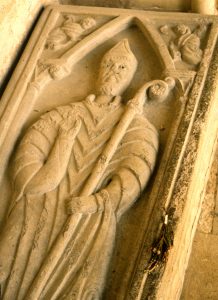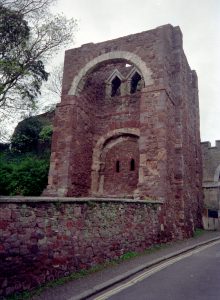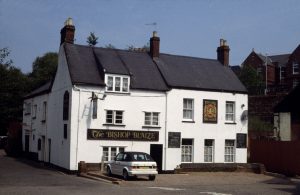The city of Exeter in Devon, England was my choice for the setting Plague of a Green Man, which I envisioned as a prequel to my first novel, Effigy of the Cloven Hoof. In my last post, I tried to explain how my experience of living in Exeter stimulated the choice. Come along with me as we discuss some of the history of Exeter in this posting of the blog.
 Exeter is an ancient city; its history goes back to the first century Roman occupation of Brittainia. A Roman fort was constructed there about 55 CE called Isca Dumnoniorum, often abbreviated to Isca by the Romans. The Second Augustan Legion served there for two decades before relocating to Wales. Dumnoniorum was the Latin name for the capital of the Dumnonian tribe of Celts resident during and after the Roman occupation which ended 380 CE.
Exeter is an ancient city; its history goes back to the first century Roman occupation of Brittainia. A Roman fort was constructed there about 55 CE called Isca Dumnoniorum, often abbreviated to Isca by the Romans. The Second Augustan Legion served there for two decades before relocating to Wales. Dumnoniorum was the Latin name for the capital of the Dumnonian tribe of Celts resident during and after the Roman occupation which ended 380 CE.
At the beginning of the seventh century, Saxons moved in and called the city Escanceaster. Danes began raiding the town in the ninth century. In 1048, Exeter replaced Crediton as the seat of the Bishop of Devon and Cornwall with Leofric installed as bishop in 1050. A picture of his effigy is shown on the left. Two years after the Norman Conquest in 1066, Exeter rebelled against William the Conqueror but was subdued after an 18-day siege.
Despite significant bombing during the Second World War, there are many medieval ruins and buildings which survive. William built Rougemont Castle, the gatehouse of which survives and is pictured on the right. A new Norman-style cathedral was started in 1133. Its side towers were incorporated into the Fourteenth Century decorated Gothic-style building which still stands. It was completed largely before 1380, the time when I set Plague of as Green Man in Exeter. It plays a role in my story, as does the medieval bridge over the River Exe. Half of that bridge survives as a ruin. Another medieval survivor which I use in my story is the series of underground passages which brought water to the center of medieval Exeter. The underground passages also play a role in my story.
An important aspect of Exeter’s economy in the medieval period which continued to develop for centuries, was the wool trade. A ban on the export of wool by King Edward III caused weaving and cloth-making to become important in England. Exeter on the River Exe was well situated both for the location of fulling mills as well as the export of wool products. Large flocks of Devonshire sheep provided an excellent supply of wool for the manufacture of those products.
 In Plague of a Green Man set in 1380, my heroine, Lady Apollonia, and her second husband, Edward, are in the wool business and have gradually expanded from their home base in Aust to other locations in the West Country such as Exeter. The part of the city known as Exeter Island in the River Exe just outside the medieval wall, was rich in fulling mills and still houses a pub known as the Bishop Blaize which was built in 1327. It was a center for the wool trade until 1471, well after my story, when the later-built Tucker’s Hall replaced it. The Bishop Blaize Pub continues in operation today and is shown below.
In Plague of a Green Man set in 1380, my heroine, Lady Apollonia, and her second husband, Edward, are in the wool business and have gradually expanded from their home base in Aust to other locations in the West Country such as Exeter. The part of the city known as Exeter Island in the River Exe just outside the medieval wall, was rich in fulling mills and still houses a pub known as the Bishop Blaize which was built in 1327. It was a center for the wool trade until 1471, well after my story, when the later-built Tucker’s Hall replaced it. The Bishop Blaize Pub continues in operation today and is shown below.
Please join us in our next post when I shall tell you more about the area in Devon surrounding Exeter and how that plays into my story.
